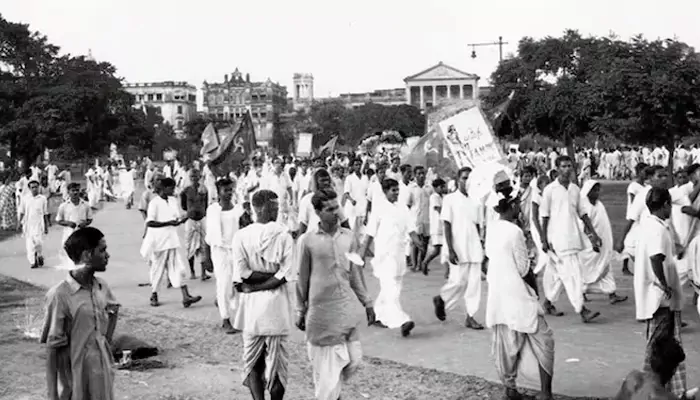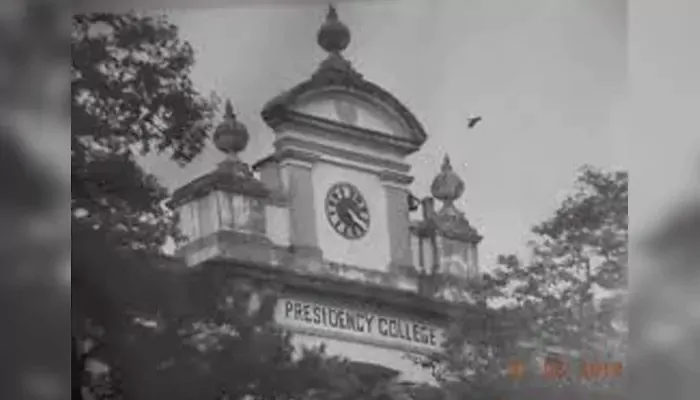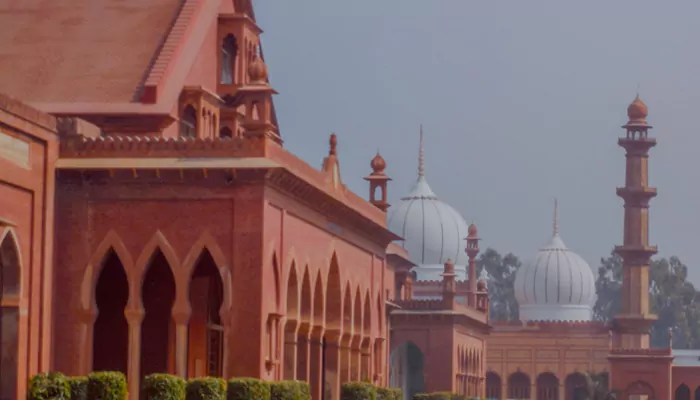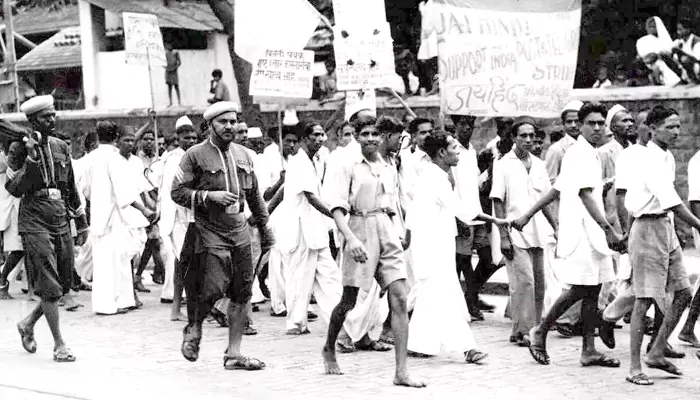
When classrooms turned into battlegrounds for India's freedom.
The year was 1921. Across British-ruled India, a wave of youthful defiance swept through the classrooms, libraries, and assembly halls of major colleges and universities. Students were no longer willing to study under a colonial system that belittled their identity. Inspired by Gandhi's call for Non-Cooperation, they put down their pens, tore up textbooks, and walked out en masse. This was not just a boycott. It was a turning point when educational institutions like Aligarh Muslim University (AMU) and Presidency College in Calcutta became crucibles of resistance.

The Non-Cooperation Movement, launched in 1920 by Mahatma Gandhi, urged Indians to reject British-controlled institutions. It wasn't long before students across the country responded. In Calcutta, around 3,000 students from government-aided colleges staged a single, coordinated strike in early 1921. The colonial classroom, once seen as a place for upward mobility, had become a symbol of submission.
In Presidency College, students protested not just with slogans but with solidarity. The mood turned electric. Debates on nationalism became daily affairs. Hostel corridors buzzed with revolutionary poems. Even parents—initially hesitant—began to support the growing sentiment: it was time to educate oneself for the nation, not the Empire.

At the newly formed Aligarh Muslim University, the transformation was striking. Formerly the Muhammadan Anglo-Oriental College, the institution had strong ties to British education. But by 1920, change was in the air. Many students left AMU to join Jamia Millia Islamia, a university founded as part of the national movement. Influential leaders like Maulana Mohammad Ali and Mahatma Gandhi visited the campus, urging students to contribute to the struggle.
The Khilafat and Non-Cooperation movements resonated deeply with the people here. Muslim students, once hesitant to challenge colonial authority, joined marches, boycotted exams, and embraced the call for Swaraj. The university became a powerful space where religious identity and political awakening converged.
In Calcutta, Presidency College had long been a hub of intellectual excellence. However, by the early 20th century, it had also become a furnace of rebellion. Students had protested British arrogance before—famously when Subhas Chandra Bose was expelled in 1916 for allegedly assaulting a professor who insulted Indians.
By 1921, the political temperature on campus was boiling. Students staged walkouts, disrupted lectures, and held secret meetings to plan boycotts. The central grounds of the college became rallying points where speeches echoed the demand for freedom. For many, the strike was their first act of civil disobedience, and the beginning of a lifelong commitment to India's liberation.
These protests weren't symbolic. Students risked expulsion, future careers, and social security. The colonial administration responded harshly, cutting scholarships, threatening closures, and deploying police to campuses. In some cases, colleges were forced to suspend operations entirely. Yet the student's resolve held firm.
Many joined national schools, such as the Gujarat Vidyapith and Kashi Vidyapith, which were established by freedom fighters to offer education free from British influence. A generation chose patriotic duty over personal gain. Their sacrifice laid the foundation for future student movements across India.
The 1921 strike was not just a moment; it was a movement. It gave birth to a tradition of student activism that shaped India's freedom struggle. From the Civil Disobedience Movement to the Quit India Movement, students continued to play frontline roles. The All India Students' Federation, established in 1936, became a key platform for young voices.
Even after independence, the spirit lived on. From anti-emergency protests in the 1970s to recent movements led by students at Jamia, JNU, and AMU, campuses have remained alive with political energy. It all began with the courage of those who, in 1921, dared to say no.

The Students' Strike of 1921 reminds us that proper education is not just about books and exams; it is also about the pursuit of knowledge and the development of critical thinking. It's about awakening. For thousands of young Indians, college was not merely a stepping stone to a job—it became a path to justice, equality, and freedom.
Institutions like AMU and Presidency College proved that campuses could shape the course of a nation. They did not just nurture scholars—they birthed revolutionaries.
Their voices still echo on the walls of Indian universities. And every time a student stands up for what is right, they continue the legacy of 1921.